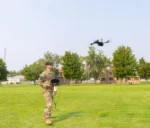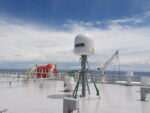In a significant escalation of military aid to Kyiv, France has confirmed the delivery of additional Aster surface-to-air missiles and a squadron of Mirage 2000-5 fighter jets to Ukraine. The move aims to bolster Ukrainian air defenses against sustained Russian missile and drone attacks targeting critical infrastructure and urban centers.
French Strategic Shift: From Ground-Based SAMs to Multirole Fighters
French President Emmanuel Macron announced the aid package in early October 2025 as part of a broader European effort to reinforce Ukraine’s integrated air defense network ahead of winter. This marks the first confirmed transfer of manned Western fighter aircraft from France to Ukraine, following earlier deliveries of Soviet-era MiG-29s by Poland and Slovakia.
The package includes:
- An undisclosed number of Aster 30 Block 1 missiles for use with the Franco-Italian SAMP/T (MAMBA) air defense system already deployed in Ukraine since mid-2023.
- A squadron (reportedly up to 12) of Dassault Mirage 2000-5 multirole fighters along with associated training packages and logistics support.
This dual-track reinforcement—ground-based SAMs plus combat aviation—reflects an evolving doctrine in NATO support for Ukraine that prioritizes layered air defense against Russia’s increasingly complex aerial threat mix.
Aster Missiles: High-Endurance SAMs for Theater-Level Defense
The Aster family—developed jointly by MBDA France and Italy—is one of Europe’s most capable missile defense systems. The Block 1 variant delivered to Ukraine is optimized for intercepting tactical ballistic missiles (TBMs), cruise missiles, UAVs, and fast-moving aircraft at ranges up to ~120 km with altitudes exceeding Mach 4.5 terminal velocity.
Key features include:
- Active radar seeker: Enables fire-and-forget capability with high accuracy against maneuvering targets.
- Vertical launch system (VLS): Offers full hemispheric coverage without repositioning launchers.
- SAMP/T integration: Compatible with Arabel radar and C2 modules already fielded in Ukrainian service since June 2023 deployment near Kyiv.
The new missile shipment replenishes stocks reportedly depleted after months of intercepting Shahed-type loitering munitions and Kalibr/Iskander cruise missile barrages. French officials have not disclosed quantities but emphasized that deliveries are ongoing under a classified bilateral arrangement separate from EU or NATO channels.
Mirage 2000-5 Jets: Interceptor Role Reemerges in Ukrainian Skies
The Dassault Mirage 2000-5 is a fourth-generation delta-wing fighter designed primarily for air superiority missions. While older than F-16 variants being supplied by other NATO allies (notably Denmark and the Netherlands), the -5 upgrade offers advanced avionics including RDY radar capable of multi-target tracking and BVR engagements using MICA EM/IR missiles.
Ukraine is expected to deploy these aircraft primarily as interceptors tasked with countering Russian Su-34 strike fighters or cruise missile carriers operating near frontline zones or over occupied territories like Crimea. Their high-speed climb rate (~285 m/s) and supersonic dash make them suitable for rapid QRA (Quick Reaction Alert) roles.
Dassault technicians are reportedly assisting in initial training phases alongside French Air Force instructors at an undisclosed base outside mainland France. Ukrainian pilots already trained on MiG platforms are undergoing conversion courses focused on fly-by-wire handling characteristics unique to delta-wing designs.
Tactical Impact: Layered IADS Integration Underway
The combined effect of SAMP/T batteries reinforced with fresh Asters plus Mirage patrols enables a more resilient Ukrainian Integrated Air Defense System (IADS). This layered architecture now includes:
- Long-range SAMs: Patriot PAC-3 MSE (USA/Germany), SAMP/T MAMBA (France/Italy)
- Medium-range systems: NASAMS (Norway/USA), IRIS-T SLM (Germany)
- Tactical SHORAD: Gepard SPAAGs (Germany), Crotale NG (France), Avenger/Stinger MANPADS
- Manned interceptors: MiG-29 variants, Su-27P/UBM legacy fleet; now augmented by Mirage 2000-5
- C-UAS assets: EW jammers like Bukovel-MB; laser-guided AAA; FPV drone interceptors
This multi-tiered approach is crucial as Russia adapts its strike packages—often combining low-flying cruise missiles with decoy drones or saturation attacks using Iranian-made Shahed series UAVs. The addition of high-speed interceptors like the Mirage enhances response time while reducing dependence on finite SAM inventories during mass raids.
NATO Dynamics and Industrial Implications
This French aid package also signals growing willingness among major European powers to provide not just defensive weapons but also offensive-capable platforms under strict ROE constraints. While Paris maintains that Mirages will be used solely within sovereign Ukrainian territory for defensive purposes, their presence complicates Russian planning by introducing another credible interceptor vector beyond ground-based systems alone.
The transfer also reflects shifting industrial dynamics within Europe’s defense sector:
- Dassault Aviation: Offloading aging Mirage fleets allows focus on Rafale production lines while deepening ties with export clients like India or UAE who operate similar variants.
- MBDA: Continued demand for Aster stocks may accelerate production cycles at its Bourges facility amid rising orders from Italy, UK Type 45 upgrades, and now Eastern European partners seeking TBM defenses post-Iskander strikes in Poland/Romania border zones.
- NATO logistics integration: Cross-training Ukrainian crews on diverse Western platforms forces deeper standardization efforts across datalinks (Link-16), IFF protocols, maintenance cycles under STANAG frameworks.
Conclusion: Strategic Significance Beyond Immediate Defense Gains
The French decision to supply both advanced SAM munitions and multirole fighters marks a qualitative leap in Western support for Kyiv’s long-term air sovereignty ambitions. While unlikely to shift battlefield dynamics overnight given training lags and limited aircraft numbers initially available, it sets precedent for broader fixed-wing transfers from other NATO states still weighing political risks versus operational needs in Ukraine’s contested skies.
If successfully integrated into existing IADS networks—and supported by robust sustainment pipelines—the combination could significantly blunt Russia’s ability to impose strategic paralysis via long-range fires this winter campaign season. More broadly, it underscores how Europe is recalibrating its military-industrial posture toward sustained proxy deterrence against Moscow’s revisionist ambitions well into the next decade.








